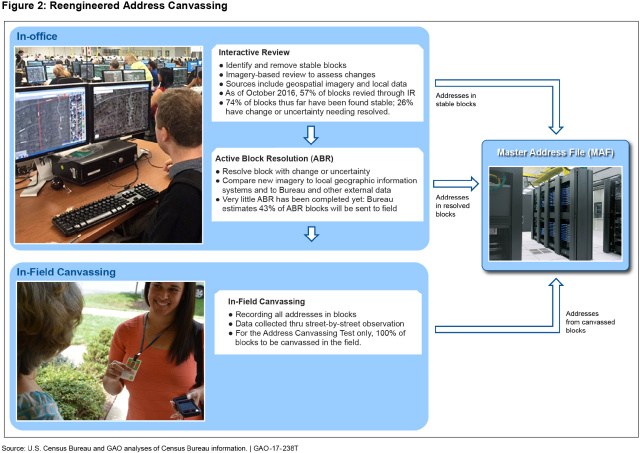Prepping for the 2020 Census
- Optimizing responses by communicating the importance of the 2020 census to the public, and encouraging use of the Internet for follow-up;
- Maximizing the use of other data sources that households have already provided to the government to reduce the need for costly follow-up;
- Increasing the use of technology to more efficiently and effectively manage fieldwork; and
- Eliminating nationwide door-to-door operations and identifying housing addresses using in-office procedures, as opposed to fieldwork, as shown in the figure below.
 (Excerpted from GAO-17-238T)
(Excerpted from GAO-17-238T)
- Questions on the content of this post? Contact Robert Goldenkoff at goldenkoffr@gao.gov or Dave Powner at pownerd@gao.gov.
- Comments on GAO’s WatchBlog? Contact blog@gao.gov.

GAO's mission is to provide Congress with fact-based, nonpartisan information that can help improve federal government performance and ensure accountability for the benefit of the American people. GAO launched its WatchBlog in January, 2014, as part of its continuing effort to reach its audiences—Congress and the American people—where they are currently looking for information.
The blog format allows GAO to provide a little more context about its work than it can offer on its other social media platforms. Posts will tie GAO work to current events and the news; show how GAO’s work is affecting agencies or legislation; highlight reports, testimonies, and issue areas where GAO does work; and provide information about GAO itself, among other things.
Please send any feedback on GAO's WatchBlog to blog@gao.gov.
